![を – Marking the Direct Object in Japanese [JLPT N5]](http://hirakan.com/cdn/shop/articles/o-direct-object.jpg?v=1761960990&width=1100)
を – Marking the Direct Object in Japanese [JLPT N5]
Share
Quick Summary
- Meaning: を marks the direct object — the thing that receives the action of a verb. It’s pronounced “o.”
- How to Use: Put を after the noun (object) and before the verb.
Example:
- 私の猫は新聞を読みます。
- Watashi no neko wa shinbun o yomimasu.
- My cat reads the newspaper.
Overview
In Japanese, を marks the direct object of a sentence — the thing your action directly affects. Use it with transitive verbs like 食べます (tabemasu, to eat), 読みます (yomimasu, to read), and 作ります (tsukurimasu, to make). The basic idea: Someone does something to something. The “something” right before を is your object.
Good news: を never changes. The verb can be in any tense or form, but を stays the same. Another handy use you’ll see early on: with motion verbs like 歩きます (arukimasu, to walk) and 走ります (hashirimasu, to run), を can mark the route or space you move through.
Pronunciation tip: the particle を is pronounced “o”. On keyboards you usually type “wo,” but you’ll pronounce it just “o.”
Quick tip: を marks the object, while が marks the subject. Start by asking, “What is being acted on?” — that’s your を.
Structure / Formation
Base formulas
- N を V
- N を V-ます
- N を V-た / V-ない
- N を V-たい
- N を V-ている
- Place を V (motion/route)
How to form and use を
1) Choose the object noun. 2) Add を after it. 3) Put the verb at the end. That’s it. The subject (often with は or が) can appear before, but the object + を sits right before the verb.
Example:
- 宇宙人はパンを食べます。
- Uchūjin wa pan o tabemasu.
- Aliens eat bread.
You can change the verb form and keep を:
- 宇宙人はパンを食べたいです。
- Uchūjin wa pan o tabetai desu.
- The alien wants to eat bread.
Route or space with motion verbs
With movement verbs like 歩きます (arukimasu, to walk) and 走ります (hashirimasu, to run), を can mark the path you pass through. Think “move through X.”
Example:
- ペンギンは公園を走ります。
- Pengin wa kōen o hashirimasu.
- The penguin runs through the park.
Pronunciation and typing
を is pronounced “o”. When typing, enter “wo” to get を, but say it as “o.” The spelling is special, but the sound is simple.
Usage tip: を vs が
- が marks the doer or what exists/appears (the subject).
- を marks the thing the action hits (the object).
Try this thinking: “Who does it?” → が/は. “What do they do it to?” → を.
Politeness and casual speech
を never changes. Only the verb changes form: 食べます (tabemasu, to eat) → 食べました (tabemashita, ate), 食べない (tabenai, don’t eat), 食べている (tabete iru, be eating). In casual talk, people sometimes drop を in fast speech, but for clear, correct Japanese, keep を in your sentences.
Example Sentences
- ロボットは宿題を食べます。
- Robotto wa shukudai o tabemasu.
- Robots eat homework.
- 金魚はマンガを読みません。
- Kingyo wa manga o yomimasen.
- The goldfish doesn't read manga.
- おじいさんはきのうロボットのケーキを作りました。
- Ojīsan wa kinō robotto no kēki o tsukurimashita.
- Grandpa made a robot cake yesterday.
- 私はタイムマシンを買いたいです。
- Watashi wa taimu mashin o kaitai desu.
- I want to buy a time machine.
- 忍者は図書館を走ります。
- Ninja wa toshokan o hashirimasu.
- The ninja runs through the library.
Quick Practice
(Answers and explanations are right under this section.)
Multiple-Choice
1. Choose the correct polite sentence: “I drink water.”
- A. 私は水を飲みます。(Watashi wa mizu o nomimasu.)
- B. 私は水が飲みます。(Watashi wa mizu ga nomimasu.)
- C. 私は水と飲みます。(Watashi wa mizu to nomimasu.)
- D. 私は水や飲みます。(Watashi wa mizu ya nomimasu.)
2. Choose the correct polite negative sentence: “The alien does not read the newspaper.”
- A. 宇宙人は新聞を読みません。(Uchūjin wa shinbun o yomimasen.)
- B. 宇宙人は新聞が読みません。(Uchūjin wa shinbun ga yomimasen.)
- C. 宇宙人は新聞と読みません。(Uchūjin wa shinbun to yomimasen.)
- D. 宇宙人は新聞や読みません。(Uchūjin wa shinbun ya yomimasen.)
3. Choose the correct polite past sentence: “Grandma made curry yesterday.”
- A. おばあさんはきのうカレーを作りました。(Obāsan wa kinō karē o tsukurimashita.)
- B. おばあさんはきのうカレーが作りました。(Obāsan wa kinō karē ga tsukurimashita.)
- C. きのうおばあさんはカレーを作ります。(Kinō obāsan wa karē o tsukurimasu.)
- D. おばあさんはきのうカレーを作りません。(Obāsan wa kinō karē o tsukurimasen.)
4. Choose the sentence that means “The robot runs through the station.”
- A. ロボットは駅を走ります。(Robotto wa eki o hashirimasu.)
- B. ロボットは駅で走ります。(Robotto wa eki de hashirimasu.)
- C. ロボットは駅に走ります。(Robotto wa eki ni hashirimasu.)
- D. ロボットは駅と走ります。(Robotto wa eki to hashirimasu.)
5. Choose the correct sentence with たい-form: “The panda wants to eat cake.”
- A. パンダはケーキを食べたいです。(Panda wa kēki o tabetai desu.)
- B. パンダはケーキに食べたいです。(Panda wa kēki ni tabetai desu.)
- C. パンダはケーキと食べたいです。(Panda wa kēki to tabetai desu.)
- D. パンダはケーキや食べたいです。(Panda wa kēki ya tabetai desu.)
Spot-the-Error
6. One sentence has a を mistake. Which one?
- A. 私はコーヒーを飲みます。(Watashi wa kōhī o nomimasu.)
- B. 兄は音楽を聞きます。(Ani wa ongaku o kikimasu.)
- C. 友だちは本読みます。(Tomodachi wa hon yomimasu.)
7. One sentence has a を mistake with a motion verb. Which one?
- A. ペンギンは公園を歩きます。(Pengin wa kōen o arukimasu.)
- B. 先生は学校を行きます。(Sensei wa gakkō o ikimasu.)
- C. ロボットは橋を渡ります。(Robotto wa hashi o watarimasu.)
Translation
8. Translate into Japanese (polite, use を): “I am reading a manga.”
9. Translate into Japanese (polite past negative, use を): “The ninja didn’t buy a banana.”
10. Translate into Japanese (polite, use を): “Every day, my robot cleans the room.”
Answers and Explanations
- A. 私は水を飲みます。(Watashi wa mizu o nomimasu.) を marks “water” as the direct object; the other particles are incorrect here.
- A. 宇宙人は新聞を読みません。(Uchūjin wa shinbun o yomimasen.) The object “newspaper” needs を before the verb in a polite negative sentence.
- A. おばあさんはきのうカレーを作りました。(Obāsan wa kinō karē o tsukurimashita.) を correctly marks what was made, and 作りました is polite past.
- A. ロボットは駅を走ります。(Robotto wa eki o hashirimasu.) を marks the route you move through; で/に change the meaning (“at” or “to”).
- A. パンダはケーキを食べたいです。(Panda wa kēki o tabetai desu.) を marks what the panda wants to eat; the other choices misuse particles or the form.
- C. 友だちは本読みます。(Tomodachi wa hon yomimasu.) Missing を after 本; correct is 友だちは本を読みます。(Tomodachi wa hon o yomimasu.)
- B. 先生は学校を行きます。(Sensei wa gakkō o ikimasu.) 行きます takes に/へ for destination, not を; use 学校に行きます。(Gakkō ni ikimasu.)
- 私はマンガを読んでいます。(Watashi wa manga o yonde imasu.) を marks “manga” as the object; 〜ている shows an ongoing action.
- ニンジャはバナナを買いませんでした。(Ninja wa banana o kaimasen deshita.) を marks the object and 〜ませんでした is polite past negative.
- 毎日、私のロボットは部屋を掃除します。(Mainichi, watashi no robotto wa heya o sōji shimasu.) を marks “room” as the thing being cleaned with a する-verb.
Related Posts
-
![も – Saying “Also” and “Too” in Japanese [JLPT N5]](//hirakan.com/cdn/shop/articles/mo-also-too_99f908e6-78d0-4f82-8319-391ef42764bc.jpg?v=1763787251&width=170)
も – Saying “Also” and “Too” in Japanese [JLPT N5]
Quick Summary Meaning: The particle も means “also,” “too,” or “even.” It shows that something is the same as someth...
-
![と – Linking 'And', 'With', and Quotations in Japanese [JLPT N5]](//hirakan.com/cdn/shop/articles/to-and-with-quotation.jpg?v=1763265110&width=170)
と – Linking 'And', 'With', and Quotations in Japanese [JLPT N5]
Quick Summary Meaning: と links things like “A and B,” marks doing something with someone, and shows a quotation (“…,”...
-
![で – Marking Where and How an Action Happens in Japanese [JLPT N5]](//hirakan.com/cdn/shop/articles/de-where-how-action-happens.jpg?v=1763264973&width=170)
で – Marking Where and How an Action Happens in Japanese [JLPT N5]
Quick Summary Meaning: で marks the location where an action happens or the means/tool/method used to do something...
-
![へ – Marking Direction ‘Toward’ in Japanese [JLPT N5]](//hirakan.com/cdn/shop/articles/he-marking-direction.jpg?v=1762667986&width=170)
へ – Marking Direction ‘Toward’ in Japanese [JLPT N5]
Quick Summary Meaning: The particle へ marks direction or “toward” a place or person. It points where something is hea...
-
![に – Marking Time, Destinations, and Recipients in Japanese [JLPT N5]](//hirakan.com/cdn/shop/articles/ni-marking-destination.jpg?v=1762667846&width=170)
に – Marking Time, Destinations, and Recipients in Japanese [JLPT N5]
Quick Summary Meaning: The particle に marks a point in time (at/on), a destination you reach (to/into), or a target/r...
-
![の – Possession and Noun Linking in Japanese [JLPT N5]](//hirakan.com/cdn/shop/articles/no-possession-and-noun-linking.jpg?v=1761961297&width=170)
の – Possession and Noun Linking in Japanese [JLPT N5]
Quick Summary Meaning: Links two nouns to show possession, belonging, or description. Often reads as “’s” or “of....
-
![が – Marking the Subject ('Who/What') in Japanese [JLPT N5]](//hirakan.com/cdn/shop/articles/ga-subject-marker_60f30f70-6ca5-47ee-9a00-3646195d7d3c.jpg?v=1761386355&width=170)
が – Marking the Subject ('Who/What') in Japanese [JLPT N5]
Quick Summary Meaning: The particle が marks the subject of a sentence and highlights new or focused information (an...
-
![は (wa) – Topic Marker and Contrast in Japanese [JLPT N5]](//hirakan.com/cdn/shop/articles/wa-topic-marker.jpg?v=1761385996&width=170)
は (wa) – Topic Marker and Contrast in Japanese [JLPT N5]
Quick Summary Meaning: Marks the topic of the sentence — what you’re talking about. Often feels like “as for...” in E...
-
![じゃない・ではありません – Expressing 'Is/Was Not' in Japanese [JLPT N5]](//hirakan.com/cdn/shop/articles/janai-dehaarimasen_2594963b-531e-4f4d-a9b0-361010e0a720.jpg?v=1760865884&width=170)
じゃない・ではありません – Expressing 'Is/Was Not' in Japanese [JLPT N5]
Quick Summary Meaning: The negative of the copula “to be.” Say “is not” or “was not” with nouns and na-adjectives. Ho...
-
![だ・です/だった・でした – Saying ‘to be’ in Japanese [JLPT N5]](//hirakan.com/cdn/shop/articles/da-desu-datta-deshita_58bbc732-53fd-48da-83c7-4e477e7cc0b2.jpg?v=1760864506&width=170)
だ・です/だった・でした – Saying ‘to be’ in Japanese [JLPT N5]
Quick Summary Meaning: The Japanese copula — the basic “to be.” It links a topic to a noun or a na-adjective to state...
-

Common Japanese Onomatopoeia: Essential Words You’ll Hear Everywhere
If you spend any time in Japan, you’ll hear onomatopoeia everywhere: on TV, in everyday conversations, in manga, and ...
-

How to Say “To Increase” and “To Decrease” in Japanese: With Examples
You've noticed there are multiple ways to say “to increase” or "to decrease" in Japanese. Between transitive and intr...
-

How to Say "Police Officer" in Japanese: Common Terms and Slang
There are several ways to say "police officer" in Japanese, and each one has a different level of formality and usage...
-
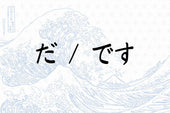
Understanding だ (da) and です (desu) in Japanese: Meaning and Usage
When learning Japanese, one of the first things you’ll come across is だ (da) and です (desu). These words don’t have a ...
-
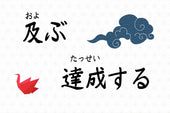
Difference Between 及ぶ (およぶ) and 達成する (たっせいする)
Both 及ぶ and 達成する can relate to "reaching" or "achieving" something, but they have distinct nuances and usage contexts...
-

JLPT N5 Study Guide: A Beginner's Roadmap to Acing the Test
If you’ve just started learning Japanese and are aiming to ace the JLPT N5, you’ll need a solid study guide to help y...
-

Beginner's Guide to Japanese Particles: Learn the Basics
TL;DR: Japanese particles are crucial for structuring sentences, acting like conjunctions or prepositions in English...
-

JLPT N5 Vocabulary List - All 748 Words You Need to Know
Vocabulary is the foundation of any language, and Japanese is no exception. The more you know, the better. Over time ...
-

JLPT N4 Kanij List - All 176 Characters You Need To Know
After mastering the JLPT N5 kanji, you're ready to take your Japanese kanji game to the next level. JLPT N4. Let's go...
-
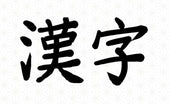
Kanji For Kanji - 漢字
Inception time. Which kanji compose the kanji of "kanji"? The kanji for "kanji" is actually pretty straightforward. I...
-

How to Memorize Katakana Easily: 9 Tips for Beginners
For those diving into Japanese, mastering hiragana and katakana is the first significant challenge. While hiragana o...
-

Complete Hiragana and Katakana Chart With All 112 Characters
The very first step for everybody who wants to learn Japanese is to study the hiragana and katakana chart (before lea...
-
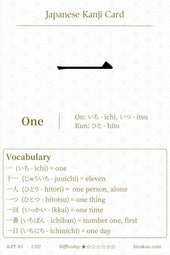
JLPT N5 Kanji: Kanji For One 一 (ichi)
Probably one the most simple kanji to remember, the kanji for 'one' is simply written '一'. Let's see its readings and...
-
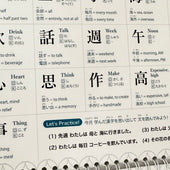
How Long Does It Take to Learn Kanji? A Beginner's Guide
Ask any Japanese student what's the scariest part of learning the language, and they'll say kanji. And they're righ...
-

Is it Necessary to Learn Kanji? The Last Answer You'll Ever Need
Many beginners in Japanese wonder whether they should really learn kanji. I know this, because I also wondered when s...
-

How Long Does it Take to Learn Hiragana and Katakana?
As a beginner in Japanese, your first step is diving into the alphabets of Hiragana and Katakana. These are the build...
-

13 Best YouTube Channels to Learn Japanese, From Beginner to Intermediate
YouTube can be an incredible resource for learning Japanese. And best of all, it's free. So we've compiled a list of ...
-
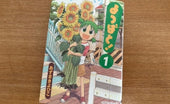
Top 10 Manga for Japanese Language Learners: From Beginners to Intermediates!
If you're learning Japanese, chances are you're interested in manga. So instead of reading texts about Tanaka-san s...
-
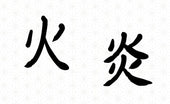
Kanji for 'Fire' in Japanese: 火 or 炎?
Welcome to our enlightening exploration of Japanese kanji! Today, we're igniting our understanding of a primal force ...
-

The Complete Guide to Country Names in Japanese: Say and Pronounce Them Right!
Whether you're planning a trip, learning Japanese, or just curious about how different countries are represented in a...
-
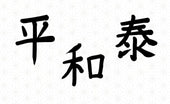
Kanji for Peace: 平, 和, 泰 - The Symbols of Harmony
You might be wondering what are the Japanese symbols for 'Peace'. In this article, we're diving deep into this univer...
-
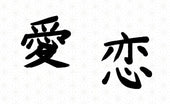
Kanji for 'Love': How and When to Use 愛 and 恋
Welcome to our journey into the world of Japanese kanji! Today, we're delving into one of the most heartwarming and p...
-
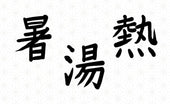
Kanji for 'Hot' in Japanese: 暑, 湯, and 熱 - A Comprehensive Guide
Welcome to our journey into the world of Japanese kanji! Today, we're going to delve into an exciting and essential c...
-
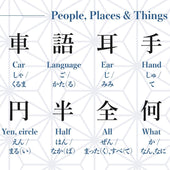
JLPT N5 Kanji List - All 112 Characters You Need To Know
Below we've listed all 112 JLPT N5 level kanji along with their English meaning, readings, and two accompanying vocab...

![も – Saying “Also” and “Too” in Japanese [JLPT N5]](http://hirakan.com/cdn/shop/articles/mo-also-too_99f908e6-78d0-4f82-8319-391ef42764bc.jpg?v=1763787251&width=170)
![と – Linking 'And', 'With', and Quotations in Japanese [JLPT N5]](http://hirakan.com/cdn/shop/articles/to-and-with-quotation.jpg?v=1763265110&width=170)
![で – Marking Where and How an Action Happens in Japanese [JLPT N5]](http://hirakan.com/cdn/shop/articles/de-where-how-action-happens.jpg?v=1763264973&width=170)
![へ – Marking Direction ‘Toward’ in Japanese [JLPT N5]](http://hirakan.com/cdn/shop/articles/he-marking-direction.jpg?v=1762667986&width=170)
![に – Marking Time, Destinations, and Recipients in Japanese [JLPT N5]](http://hirakan.com/cdn/shop/articles/ni-marking-destination.jpg?v=1762667846&width=170)
![の – Possession and Noun Linking in Japanese [JLPT N5]](http://hirakan.com/cdn/shop/articles/no-possession-and-noun-linking.jpg?v=1761961297&width=170)
![が – Marking the Subject ('Who/What') in Japanese [JLPT N5]](http://hirakan.com/cdn/shop/articles/ga-subject-marker_60f30f70-6ca5-47ee-9a00-3646195d7d3c.jpg?v=1761386355&width=170)
![は (wa) – Topic Marker and Contrast in Japanese [JLPT N5]](http://hirakan.com/cdn/shop/articles/wa-topic-marker.jpg?v=1761385996&width=170)
![じゃない・ではありません – Expressing 'Is/Was Not' in Japanese [JLPT N5]](http://hirakan.com/cdn/shop/articles/janai-dehaarimasen_2594963b-531e-4f4d-a9b0-361010e0a720.jpg?v=1760865884&width=170)
![だ・です/だった・でした – Saying ‘to be’ in Japanese [JLPT N5]](http://hirakan.com/cdn/shop/articles/da-desu-datta-deshita_58bbc732-53fd-48da-83c7-4e477e7cc0b2.jpg?v=1760864506&width=170)























